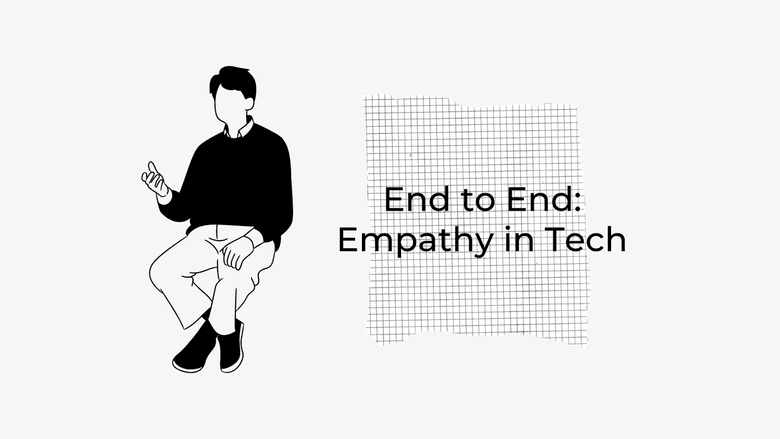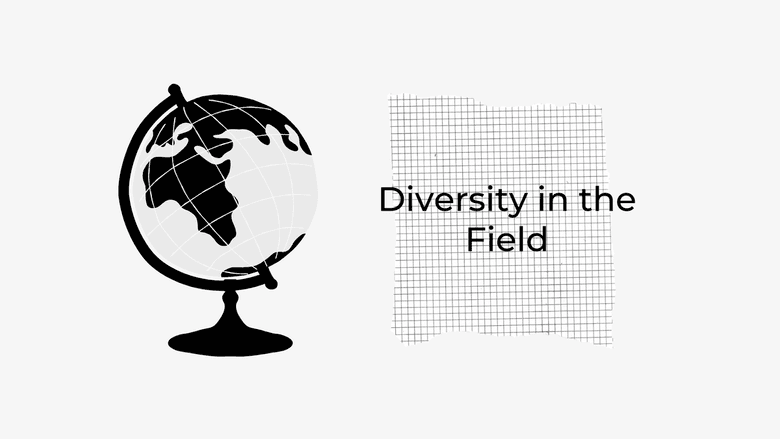Brad Sant: Former competitive beatboxer. Product designer for Facebook
A profile on Brad Sant and his design philosophy.

Brad Sant usually isn’t at his desk “making pretty things."
If anything, he estimates he’s there only 20 to 30 percent of the time.
Most of his job is actually a big process of understanding human behavior, conveying ideas, attending meetings and constant communication, often visually through prototypes or statistics.
“In fact, that's where we do most of the really hard work that makes design worth it. It's all the consideration. It's all of the disagreement. It's all of the understanding why we're trying to do something or critiquing how we might do something,” he said.
As a product designer at Facebook, Sant sees his job as figuring out the base of a problem and finding a solution for it.

Brad Sant spent his undergraduate years studying graphic design with an emphasis on interaction design. And while he initially intended to follow graphic design, he discovered an alternate passion of his: user experience design.
He started working as a graphic design intern at a small design agency in Redwood City. During the next two years, Sant wanted to integrate user experience design as a service that the agency could provide. He told the CEO and a close friend about this idea and was met with enthusiasm and encouragement to further learn about UX design through an online course.
"I splashed around in the pool a little bit and just got my hands dirty, figured it out and made a lot of mistakes along the way," he said about his experience with learning UX design.
He later landed another job as an in-house UX designer. Sant talked to some friends who worked at Facebook and found out they were building a team. And after two years at this agency, he decided to pursue a job with this team at Facebook as a product designer.

A product designer is a mixture of user interface (UI) design, user experience (UX) design and graphic design, depending on what’s needed. At Facebook, he works with engineers, data scientists, UX researchers, content strategists and product leaders. Whether it’s thinking about today, six months or three years forward, Sant collaborates with these groups to ensure that they’re executing ideas effectively and efficiently. While he is always invested in his current project, he knows he has to constantly look toward the future for what projects may come.
“The life of a product designer at Facebook is truly end-to-end. I mean, we think about everything from the very beginning to the very end, and it's this concentric cycle over and over again.”

Sant finds himself coming out of projects consistently learning about his job and his environment. It often feels like there are no limitations to these experiences. He ends up learning a lot about human behavior, which helps him build a better experience for those who interact with the product. When creating these experiences, he considers ethnographic details, age, a person’s abilities (or lack thereof) and much more.
“It’s about empathy,” Sant noted.
He knows there’s a lot we don’t know about human behavior, and part of his job is breaking that down. As frustrating as this may be, he finds his thrills in the unknown. Within these dynamics and behaviors, Sant searches for potential solutions.
“I get to learn about, what are the factors that go into making this such a diverse set of data of observation of how people do things and why.”
Sant loves working on app design because a lot of the engagement happens through mobile phones. But he recently worked on a project which involved having to do a redesign of Facebook.com. With this, he and his team acknowledged that there are still people who prefer using larger screens, like desktops.
The redesign was long overdue, but it wasn’t just visual, it was a total reconstruction of the website. This was also a great opportunity to see who uses Facebook on larger screens versus smaller screens. Such a large project came with a lot of eye-opening moments. By observing and listening, Sant and his team put new ideas onto the table that hadn’t really been considered before. When recognizing problems, designers have to look backward, but the solutions usually involve looking forward to possible approaches.
“It's yet again another example that we don't know everything. We really need to listen to what people show us about the products that we thought that we knew we were building,” he said.

Sant sees diversity as “a mixture of different people with a vast array of possibilities and backgrounds of opinions, perspectives and experiences.” He thinks that everyone has unique capabilities and characteristics that make them who they are, and that should be celebrated.
“Diversity is necessary,” he said.
Sant believes there should be more diversity in tech, but knows it’s a work in progress. So how does diversity play a role in design? Well, in an ideal world, there would be equality. While acknowledging race, ethnicity and gender, diversity would also delve into varying backgrounds. It would touch upon different perspectives, experiences, ages and abilities.
“There would be equal representation of people of all groups, from all backgrounds and of all ages and races,” he said.
He discussed the importance of age in tech, and how that’s often overlooked. Oftentimes, older groups aren’t as tech-savvy, which may result in frustration and confusion. This impacts design decisions.
“We should be designing the cutting edge, yet most simplified kind of user experiences and especially user interfaces,” he said, “but we have to keep in mind that some people may not know that that certain thing is tappable or swipeable.”
At Facebook, there are regular internal meets and Q&A meetings with leadership that help answer questions about efforts to improve upon diversity. But even with increased awareness and efforts to support diversity in the tech industry, there is still a lot of work to be done. Sant mentioned how diversity in tech is a part of a deeper problem rooted in education and opportunities for experience. More than half of Sant’s team at Facebook are women and a person of color was hired just this month, but he noted that most leadership he’s seen in tech tends to have a higher population of older, white men.
Brad Sant is personally trying to engage with the ongoing effort of increasing diversity. He recently published a Medium article that touches upon the importance of diversity in this industry. But on the job, inclusivity is a necessity when working on a product or a feature. In addition, while conducting research through qualitative feedback, gathering diverse perspectives is incredibly important.

Sant talked about how there is actually an internal team at Facebook that focuses on feedback. When other teams are in search of feedback on their projects, this team offers opportunities for them to go to different parts of the world to watch and better understand how people use products or features. Last year, Sant went with his research team to the Dominican Republic to see how people used Facebook stories and they gathered extremely valuable insights and observations.
He recognizes that biases also play a role in developing projects. It’s important to keep an objective perspective on current products.
“The part where I think we have to be careful is to make sure that we don't bake in too much of our personal agenda into the products that we're building,” he said. He later added, “We kind of have to oscillate between making sure that things have a voice and are represented, but also make sure that it's representing the quality as well.”

In a 2005 Stanford University commencement speech, Steve Jobs said, “Stay Hungry. Stay Foolish.”
Sant tries to embody this quote by “staying in sponge mode” in which he soaks up everything he can and lets out information when needed.
“It's all about dissemination and absorption of ideas,” he said.
He believes that “staying in sponge mode” allows you to learn and try new things you normally wouldn’t have gone through otherwise, especially when you’re starting off in the design field. He encourages designers to begin at a small, startup agency so as to get a lot of experience in multiple areas. Sant emphasized the importance of keeping an open mind to learning, even if you don’t see yourself working in that particular area. That's how he learned about his interest in user experience design

“Go out there and try things. Just try anything you can, and you can do that from your living room. Create a project - it could be for only you, you show it to nobody, but go redesign a website, go redesign an app and then ask people to use your app after you've redesigned it. You'll learn a ton about what you didn't consider and what you still have to learn,” he said.
A big part of finding what you’re passionate about is exploring those unturned stones.
“Design is in everything,” he said. He later added, “Keep your eyes open, there's a lot to learn.”
You can find Brad Sant’s portfolio here.
The information provided herein is for general informational purposes only and is not intended to provide tax, legal, or investment advice and should not be construed as an offer to sell, a solicitation of an offer to buy, or a recommendation of any security by Candor, its employees and affiliates, or any third-party. Any expressions of opinion or assumptions are for illustrative purposes only and are subject to change without notice. Past performance is not a guarantee of future results and the opinions presented herein should not be viewed as an indicator of future performance. Investing in securities involves risk. Loss of principal is possible.
Third-party data has been obtained from sources we believe to be reliable; however, its accuracy, completeness, or reliability cannot be guaranteed. Candor does not receive compensation to promote or discuss any particular Company; however, Candor, its employees and affiliates, and/or its clients may hold positions in securities of the Companies discussed.
